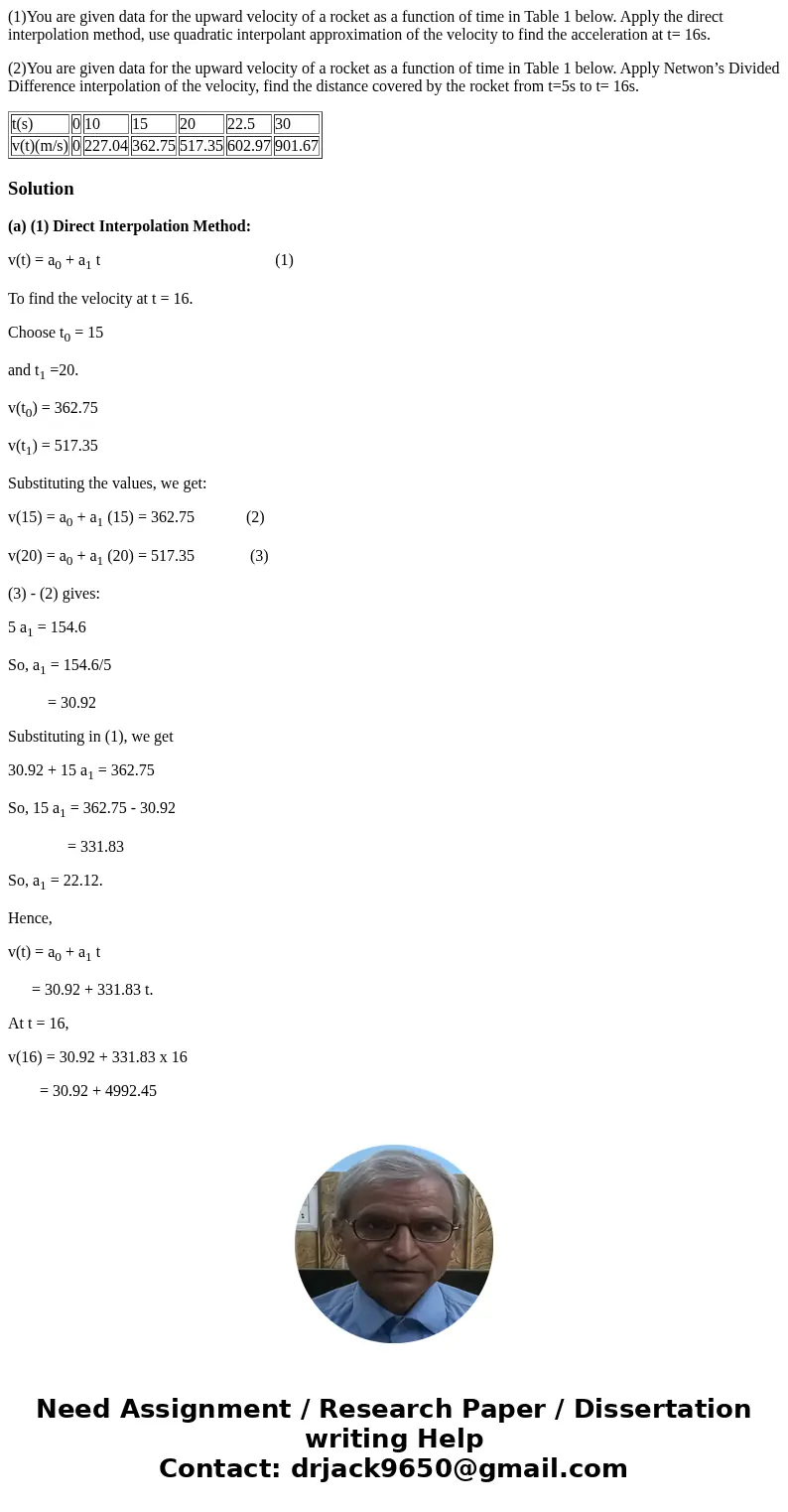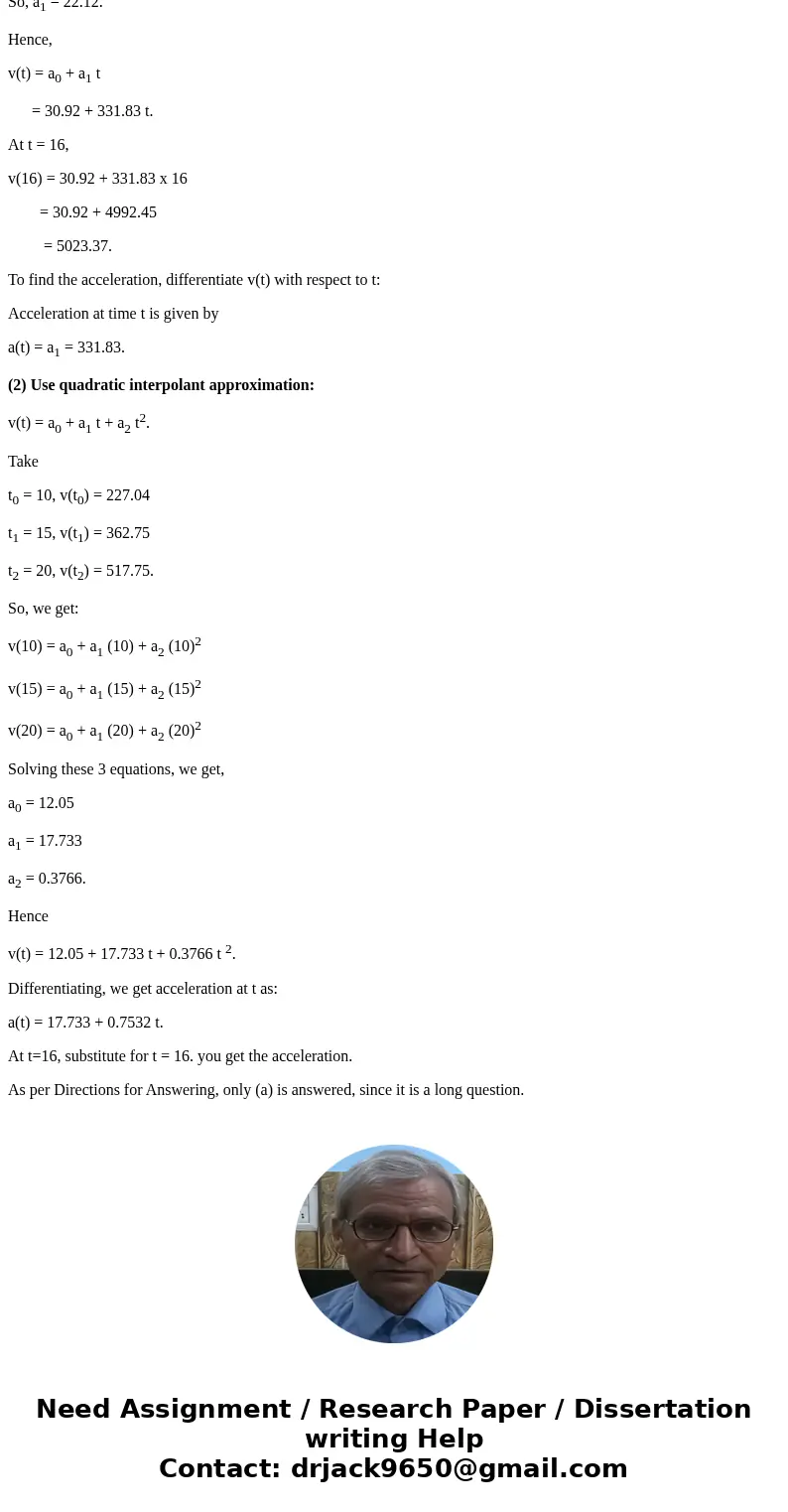1You are given data for the upward velocity of a rocket as a
(1)You are given data for the upward velocity of a rocket as a function of time in Table 1 below. Apply the direct interpolation method, use quadratic interpolant approximation of the velocity to find the acceleration at t= 16s.
(2)You are given data for the upward velocity of a rocket as a function of time in Table 1 below. Apply Netwon’s Divided Difference interpolation of the velocity, find the distance covered by the rocket from t=5s to t= 16s.
| t(s) | 0 | 10 | 15 | 20 | 22.5 | 30 |
| v(t)(m/s) | 0 | 227.04 | 362.75 | 517.35 | 602.97 | 901.67 |
Solution
(a) (1) Direct Interpolation Method:
v(t) = a0 + a1 t (1)
To find the velocity at t = 16.
Choose t0 = 15
and t1 =20.
v(t0) = 362.75
v(t1) = 517.35
Substituting the values, we get:
v(15) = a0 + a1 (15) = 362.75 (2)
v(20) = a0 + a1 (20) = 517.35 (3)
(3) - (2) gives:
5 a1 = 154.6
So, a1 = 154.6/5
= 30.92
Substituting in (1), we get
30.92 + 15 a1 = 362.75
So, 15 a1 = 362.75 - 30.92
= 331.83
So, a1 = 22.12.
Hence,
v(t) = a0 + a1 t
= 30.92 + 331.83 t.
At t = 16,
v(16) = 30.92 + 331.83 x 16
= 30.92 + 4992.45
= 5023.37.
To find the acceleration, differentiate v(t) with respect to t:
Acceleration at time t is given by
a(t) = a1 = 331.83.
(2) Use quadratic interpolant approximation:
v(t) = a0 + a1 t + a2 t2.
Take
t0 = 10, v(t0) = 227.04
t1 = 15, v(t1) = 362.75
t2 = 20, v(t2) = 517.75.
So, we get:
v(10) = a0 + a1 (10) + a2 (10)2
v(15) = a0 + a1 (15) + a2 (15)2
v(20) = a0 + a1 (20) + a2 (20)2
Solving these 3 equations, we get,
a0 = 12.05
a1 = 17.733
a2 = 0.3766.
Hence
v(t) = 12.05 + 17.733 t + 0.3766 t 2.
Differentiating, we get acceleration at t as:
a(t) = 17.733 + 0.7532 t.
At t=16, substitute for t = 16. you get the acceleration.
As per Directions for Answering, only (a) is answered, since it is a long question.


 Homework Sourse
Homework Sourse